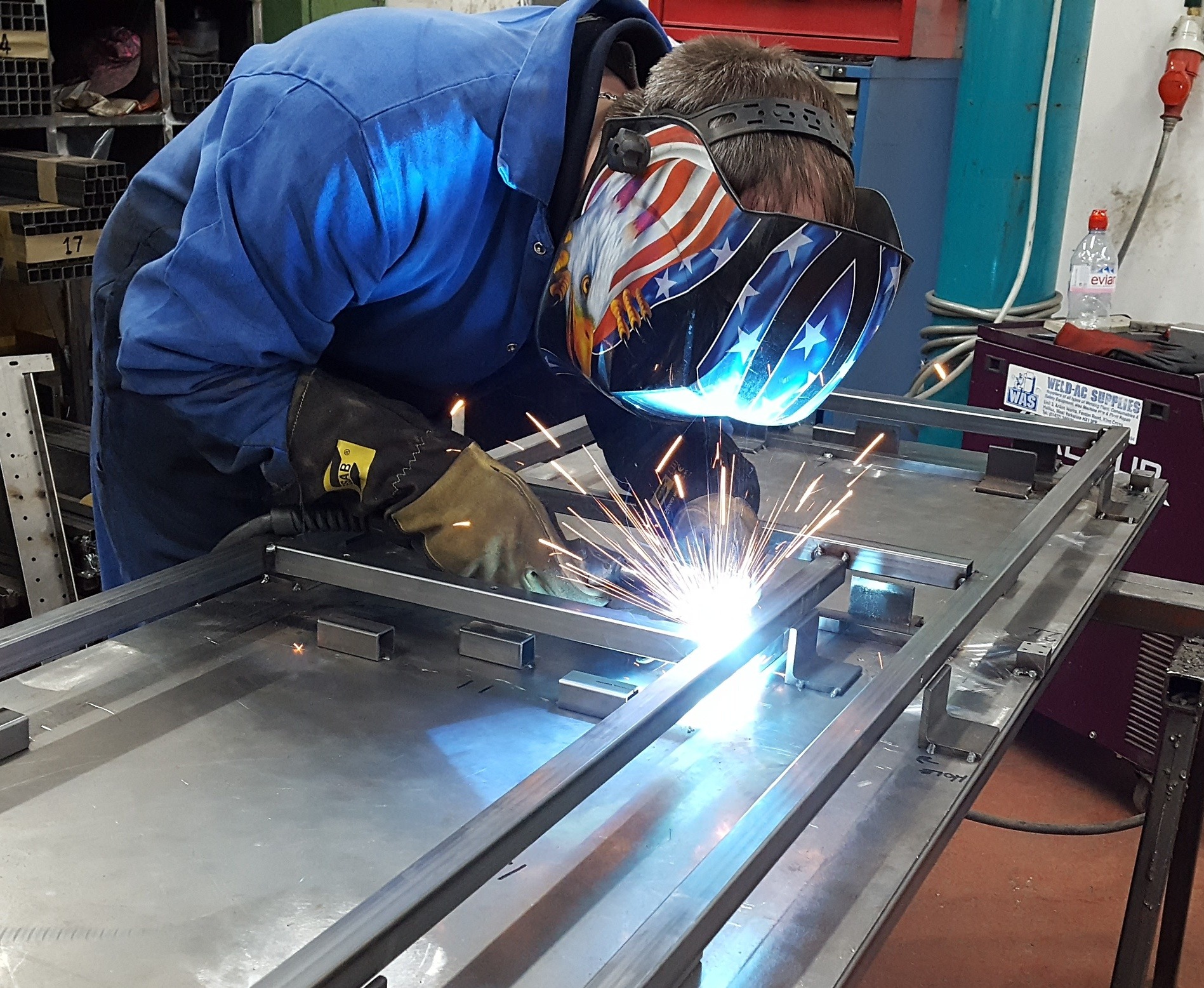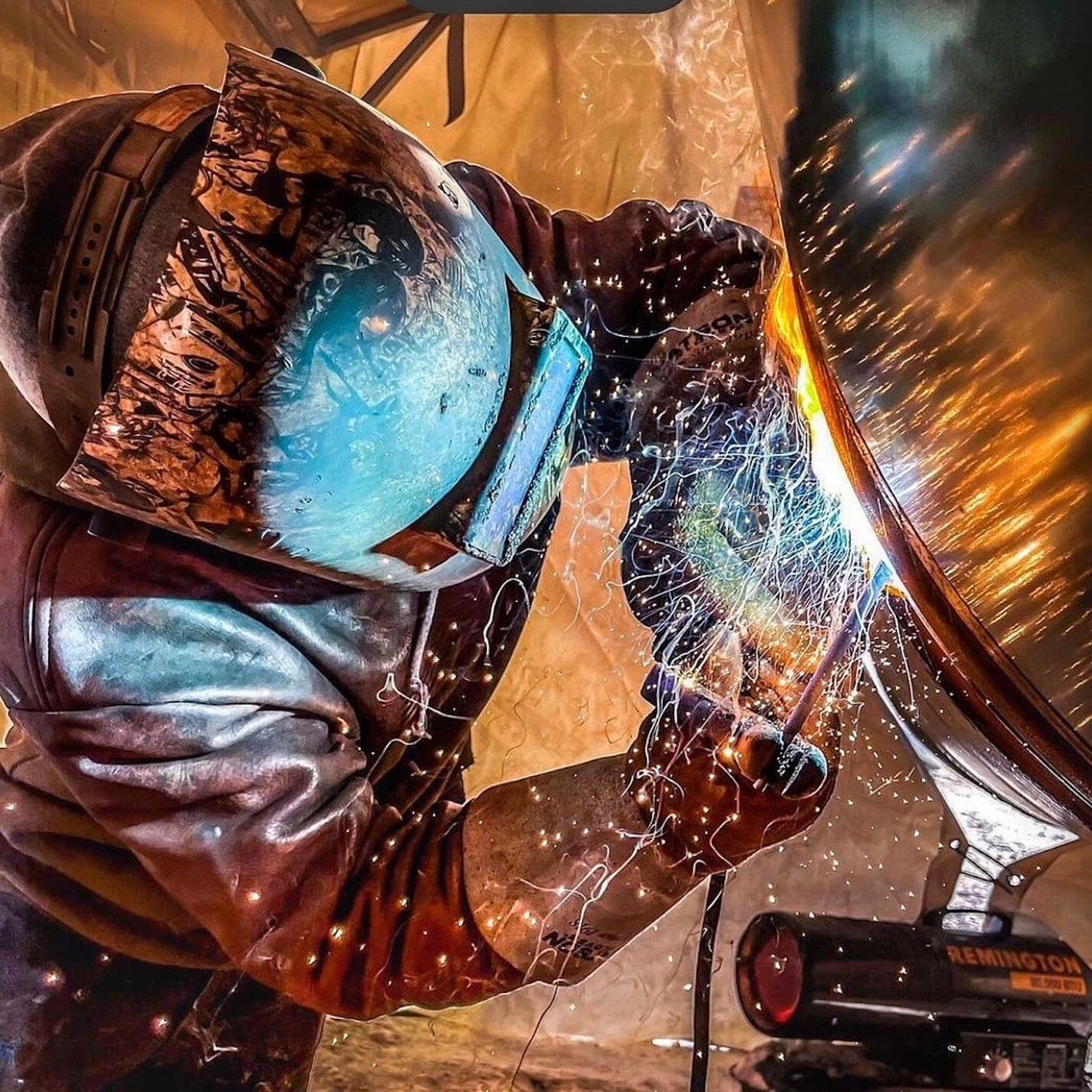Usual Welding Repair Work Issues and Just How to Address Them Efficiently
Welding fixings typically come across a variety of concerns that can endanger the honesty of the end product. Common troubles include inadequate infiltration, porosity, and imbalance, to name a few. Each defect presents unique obstacles that call for certain methods for resolution. Comprehending these issues is necessary for welders aiming to boost their results and skills. This conversation will certainly check out these usual welding repair problems and reliable methods to resolve them.
Poor Infiltration
Inadequate infiltration takes place when the weld metal fails to completely fuse with the base material, resulting in weak joints and possible architectural failures. This concern usually comes from insufficient warm input, incorrect electrode angle, or inappropriate welding speed. Welders might run into insufficient infiltration due to a miscalculation of the essential criteria for a details product density or type. In addition, contamination on the base product's surface can impede reliable bonding, worsening the trouble. To attend to poor infiltration, welders must guarantee proper settings on their equipment and maintain a tidy work surface. Routine examination of welds is advised to recognize any kind of shortages early, enabling timely adjustments and the prevention of endangered structural integrity in welded assemblies.
Porosity
Porosity is a typical defect in welded joints that manifests as small gas bubbles caught within the weld steel. This defect can endanger the honesty of the weld, resulting in lowered toughness and potential failing under stress and anxiety. Montana Mobile Welding and Repair Belgrade Fabrication. Porosity commonly develops from contamination, wetness, or incorrect welding techniques, which permit gases to escape into the liquified weld pool. To deal with porosity, welders must ensure appropriate surface area prep work, preserve a clean working atmosphere, and utilize ideal welding specifications. In addition, selecting the appropriate filler product and protecting gas can minimize gas entrapment. Regular assessment and testing of welds can aid identify porosity early, assuring prompt corrective actions are taken, consequently maintaining the quality and dependability of the welded structure
Imbalance
Misalignment in welding can arise from numerous aspects, including improper arrangement and thermal development. Recognizing the source is essential for reliable resolution. Numerous improvement strategies are offered to realign parts and assure architectural integrity.
Sources of Misalignment
Welding misalignment frequently comes from a selection of underlying issues that can compromise architectural integrity. One main reason is inappropriate fit-up of parts before welding, which can cause spaces and unequal surface areas. Variations in thermal development throughout the welding procedure can additionally result in distortion, especially if the products being signed up with have different coefficients of expansion. Additionally, inadequate fixturing and securing might fall short to hold elements safely in position, resulting in activity during welding. Improperly conserved devices, consisting of welding machines and tools, might present incongruities in the weld grain, further contributing to misalignment. Finally, operator mistake, stemming from inadequate training or experience, can also play a considerable function in developing misaligned welds.
Correction Techniques Readily Available
Addressing imbalance properly calls for a mix of rehabilitative techniques customized to the details concerns at hand. One common technique is using components or jigs to hold components in the appropriate setting throughout welding, making sure constant placement. In addition, pre-heating the materials can help in reducing distortion and boost fit-up. For substantial imbalance, mechanical adjustment strategies, such as making use of hydraulic jacks or clamps, can be used to deal with the placement prior to welding. Post-weld warmth treatment may likewise be required to alleviate anxieties triggered by imbalance. Cautious evaluation and adjustment during the setup stage can protect against imbalance concerns from coming to be considerable problems, promoting a smoother welding procedure and enhancing general architectural integrity.
Distortion
Distortion is an usual difficulty in welding that can arise from different variables, consisting of irregular cooling and heating. Recognizing the reasons for distortion is crucial for carrying out effective avoidance methods. Addressing this issue not only improves architectural integrity but also boosts the general quality of the weld.
Root causes of Distortion
When subjected to the intense warmth of welding, products frequently undertake adjustments that can bring about distortion. This phenomenon mainly occurs from thermal expansion and contraction during the welding process. As the weld area warms up, the product expands; upon air conditioning, it contracts, which can create interior stress and anxieties. On top of that, uneven heating across a work surface can exacerbate these tensions, leading to bending or flexing. The kind of material also plays a significant role; steels with varying thermal conductivity and coefficients of development might respond differently, bring about uncertain distortions. Inadequate joint layout and inadequate fixturing can contribute to imbalance during welding, raising the likelihood of distortion. Understanding these causes is necessary for efficient welding repair and prevention techniques.
Avoidance Techniques
Efficient avoidance techniques for distortion throughout welding concentrate on regulating heat input and making sure appropriate joint layout. Preserving a constant heat input assists to minimize thermal expansion and tightening, which can cause distortion. Making use of methods such as pre-heating the workpiece can also lower the temperature slope, advertising consistent home heating. Additionally, selecting ideal joint layouts, such as T-joints or lap joints, can improve stability and reduce tension site concentrations. Implementing appropriate fixturing to safeguard the work surfaces in position additionally help in preserving alignment during the welding process. Staggered welding sequences can disperse heat extra evenly, protecting against localized distortion. By applying these techniques, welders can considerably lower the likelihood of distortion and boost the total quality of their welds.
Splitting
Fracturing is an usual issue experienced in welding repairs, commonly arising from numerous variables such as inappropriate air conditioning prices, product choice, or insufficient joint preparation. The event of splits can substantially compromise the integrity of the weld, bring about possible failings throughout procedure. To address this problem, welders have to first analyze the source, guaranteeing that products are suitable and appropriately chosen for the details application. In addition, regulating the cooling rate during the welding procedure is important; fast air conditioning can generate tension and cause splitting. Correct joint design and prep work likewise contribute to minimizing the risk. Applying these approaches can enhance weld high quality and resilience, eventually decreasing the possibility of breaking in ended up weldments.

Incomplete Blend
A significant issue in welding fixings is insufficient fusion, which occurs when the weld steel does not adequately bond with the base material or previous weld passes - Montana Mobile Welding and Repair Welding. This issue can cause weaknesses in the joint, possibly jeopardizing the honesty of the welded framework. Factors adding to incomplete fusion include inadequate warmth input, improper welding strategy, and contamination of the surface areas being joined. To address this issue properly, welders need to assure proper pre-weld cleansing and surface prep work, along with readjust their welding criteria to achieve ample penetration and blend. Routine evaluation during the welding process can also aid identify incomplete combination early, allowing for timely restorative measures to enhance the overall quality of the weld
Overheating
While welding repair services can improve structural integrity, overheating presents a significant challenge that can bring about material deterioration. Extreme warmth during welding can modify the mechanical buildings of metals, leading to lowered stamina, learn this here now raised brittleness, and warping. This sensation is specifically essential in high-stress applications where structural reliability is paramount. Determining getting too hot can entail aesthetic assessments for discoloration or distortion, in addition to keeping an eye on temperature during the welding process. To alleviate the threats connected with overheating, welders must utilize proper methods, such as controlling warm input, changing travel speed, and utilizing appropriate filler materials. Additionally, applying pre- and post-weld warm therapies can assist recover material properties and enhance the overall quality of the fixing, guaranteeing long-lasting efficiency and security.
Often Asked Concerns
What Are the Common Indications of a Welding Defect?

Exactly How Can I Examine My Welds for High quality?
To test welds for top quality, one can utilize visual examinations, ultrasonic screening, and radiographic techniques. Each technique assures structural honesty, determines flaws, and validates adherence to specified criteria, eventually boosting the dependability of the welded joints.
What Safety and security Precautions Should I Take While Welding?
When welding, one must prioritize security by using suitable individual safety devices, guaranteeing correct air flow, safeguarding combustible materials away, keeping a clean office, and understanding surroundings to stop mishaps and injuries.
Can I Fix a Weld Without Remodeling the Entire Joint?
Fixing a weld without redesigning the entire joint is possible, depending upon the damages (Welding). Techniques such as grinding, including filler material, or utilizing a welding procedure can properly address details defects while preserving the bordering framework
What Devices Are Important for Efficient Welding Repairs?
Necessary tools for effective welding repairs consist of a welding machine, wire brush, grinder, safety equipment, clamps, and filler materials. Each tool plays a crucial duty in guaranteeing quality and security during the reference fixing process. Porosity commonly occurs from contamination, moisture, or incorrect welding techniques, which permit gases to escape into the molten weld pool. Improperly maintained devices, consisting of welding makers and tools, may present variances in the weld bead, additional adding to misalignment. When subjected to the intense warmth of welding, products typically go through changes that can lead to distortion. Fracturing is a typical issue experienced in welding repair services, typically resulting from various elements such as incorrect air conditioning prices, product option, or poor joint prep work. A significant concern in welding repairs is insufficient fusion, which takes place when the weld steel does not properly bond with the base material or previous weld passes.